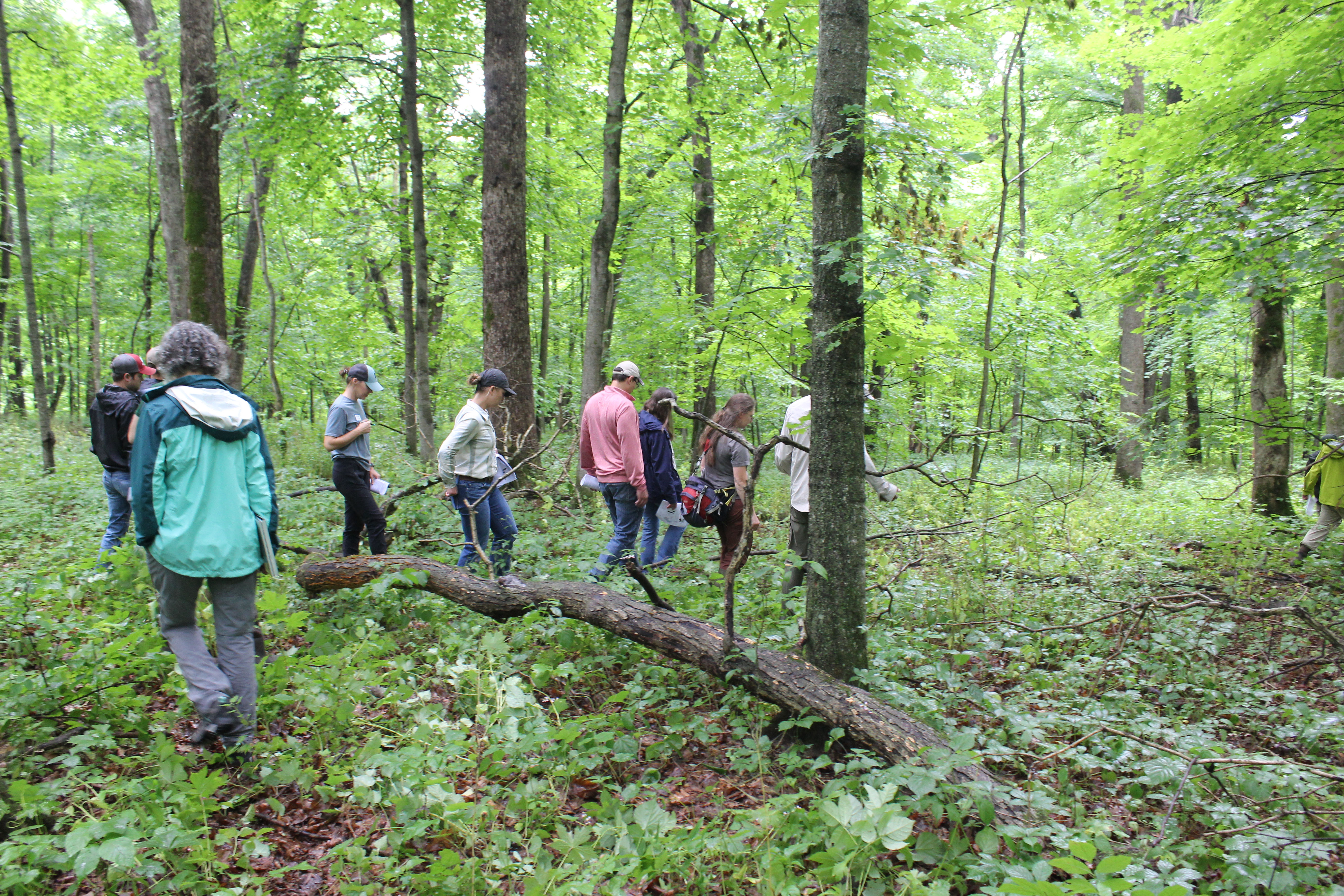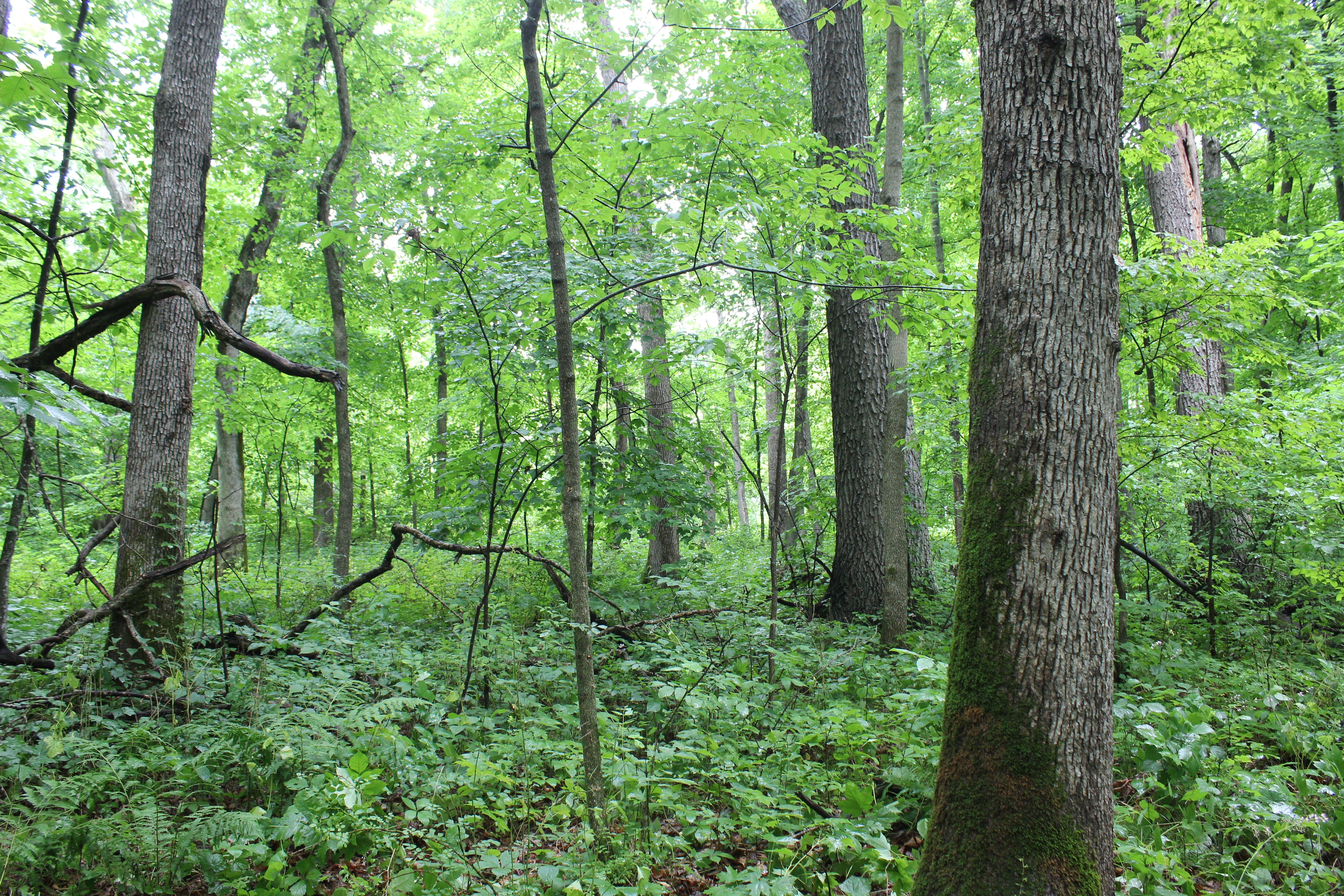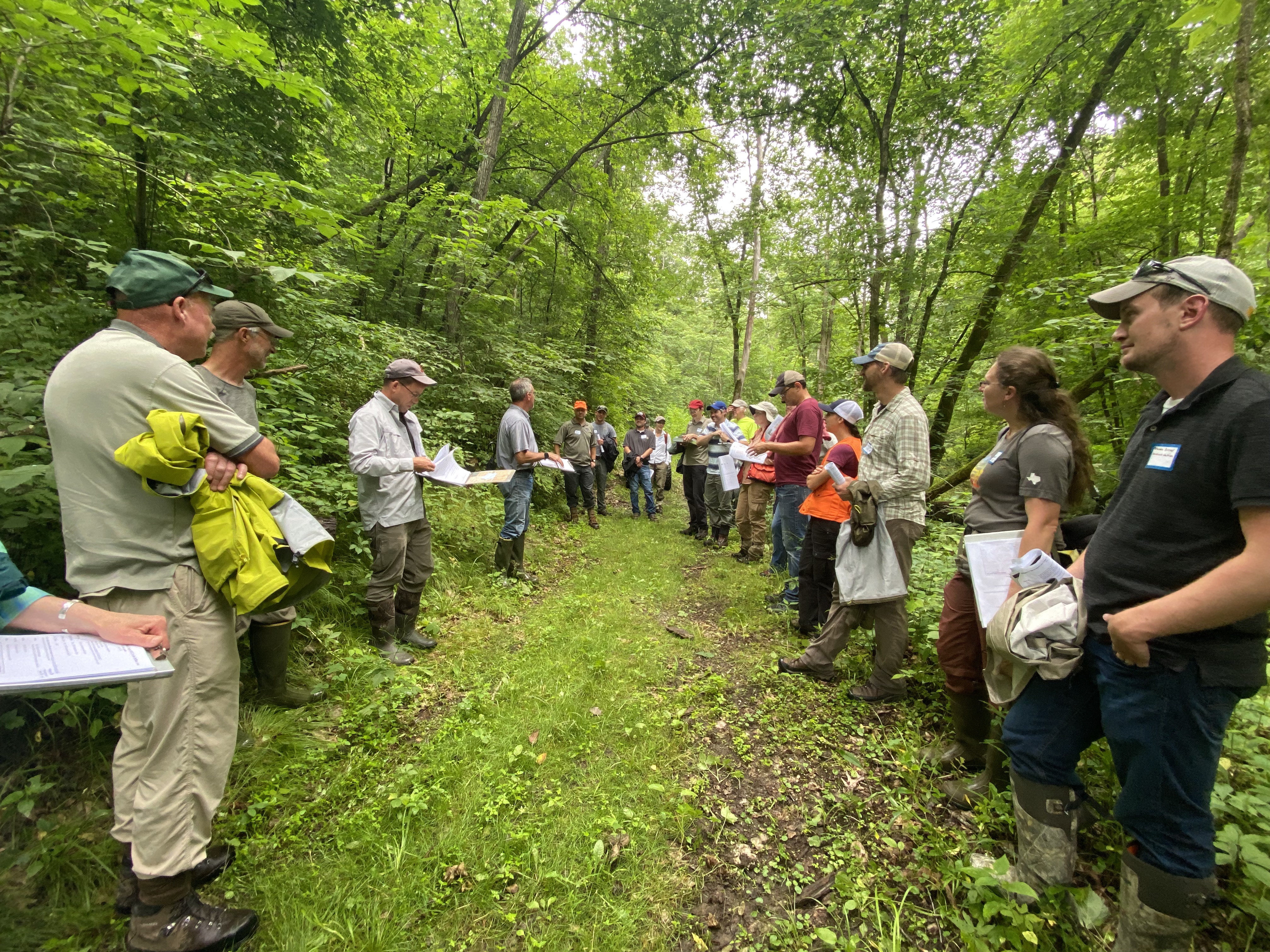A team of natural resource specialists, managers, and scientists representing the Driftless Area came together for a virtual three-day workshop in December of 2021 to develop the study design for the ASCC project site. The team developed a set of Desired Future Condition statements, Objectives, and Tactics for each climate adaptation option (resistance, resilience, transition). These three treatments are summarized briefly below:
RESISTANCE

maintain relatively unchanged conditions over time
Management Goals:
- Maintain northern red oak and white oak > 50% BA
- Stocking maintained around 70%
- Increase size and quality of overstory trees
- Maintain sparse and native midstory, allowing for advance regeneration of oak and hickory species
- Reduce prevalence of invasive species
Strategies & Approaches:
- Invasive shrub treatment (honeysuckle, buckthorn, garlic mustard)
- Midstory removal
- Free thinning (~70% stocking)
- Prioritize species as follows: white oak, other oak species (mainly northern red oak), and black walnut
- Repeat thinning in future years; maintain full stocking ~65-70%
RESILIENCE

allow some change in current conditions, but encourage eventual return to original
conditions
Management Goals:
- Multi-cohort stand with greater structural complexity, larger trees, and maintained or increased quality
- Favor native mast-producers that are drought, fire, frost, disease, and wind tolerant
- Increase genetic diversity of tree community
- Maintain spare and native midstory, allowing for advance regeneration of oak and hickory species
- Provide hard and soft mast for wildlife
- Reduce prevalence of invasive species
Strategies & Approaches:
- Invasive shrub treatment
- Midstory removal
- Site preparation including prescribed fire if conditions allow
- Underplant intermediate, shade-tolerant, fire-adapted native species
- Continuous cover irregular shelterwood: first and subsequent establishment cuttings will create three 0.75-acre opening and three 0.75-acre patches 40-50% cover
- Free thinning matrix to ~70% stocking
- Retain some dominants as seed trees, plant additional seedlings (chinkapin oak, white oak, northern red oak, black walnut, bur oak, shagbark hickory, black oak, black cherry)
TRANSITION

actively facilitate change to encourage adaptive responses
Management Goals:
- Two-cohort stand with greater structural complexity
- Encourage native and novel future-adapted species that are drought tolerant, disease resistant, and/or adapted to fire
- Increase species that are absent or minimal
- Increase species and functional diversity of tree community
- Provide hard mast for wildlife
- Encourage future-adapted species with potential economic value
- Reduce prevalence of invasive species
Strategies & Approaches:
- Invasive shrub treatment
- Midstory removal
- Site preparation including prescribed fire if conditions allow
- Underplant with future-adapted species
- Clearcutting with reserves (a.k.a. variable retention harvest): retain 20% overstory; some aggregated (0.25-0.5 acres in area) and some dispersed
- Increase future-adapted species, including native and new, future-adapted species (white oak, northern red oak, black walnut, bur oak, shagbark hickory, mockernut hickory, pignut hickory, Shumard oak, post oak, tulip poplar, shortleaf pine)


